A Look Back at Tatsuki Fujimoto Of The Prophecy – This Week in Anime
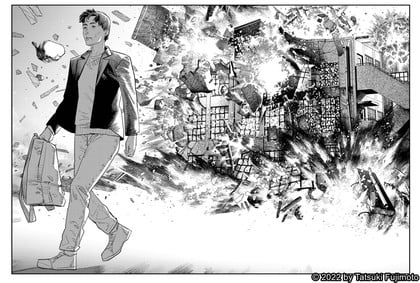
Director Kiyotaka Oshiyama will adapt Tatsuki Fujimoto‘s Look Back manga into an anime film this year, so there’s no better time for TWIA to look back at the inimitable creators’ other one-shots.
Disclaimer: The views and opinions expressed by the participants in this chatlog are not the views of Anime News Network.
Tatsuki Fujimoto‘s manga series are currently available in print from Viz Media and on the Viz Manga and Shonen Jump apps.
Allow me to be the first to welcome you, Lucas, to the hallowed annals of “This Week In Anime” history! We like to have fun here. Usually, we keep it pretty low-key. Bad anime jokes and all that. But since this is a special occasion, I figured we’d bring you aboard with a bang.
Hello Steve! Thank you so much for having me! I’m excited to be here, and I know what I’m doing.
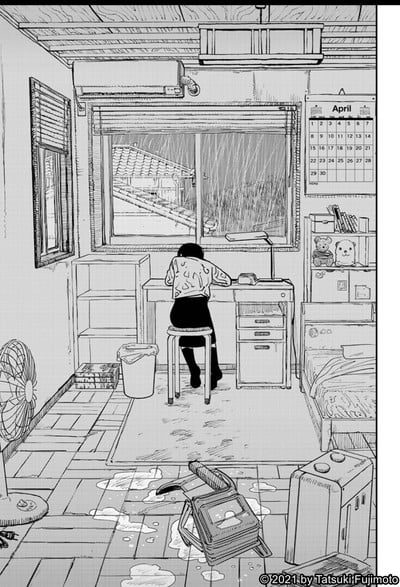
Don’t worry, kid. As long as you stick with me and have opinions about anime, manga, and the miasma of discourse that perpetually wafts around them, you’ll do well. And you can trust me. This’ll be my seventh(?) year writing these things, and I have no freakin’ idea what I’m doing either.
And while we’ve previously dug into Fujimoto vis-a-vis the Chainsaw Man anime, we figured this would be an excellent opportunity to look at his work outside of that bloody blockbuster—namely his shorts, one-shots, and other odds and ends.
He also penned a couple of one-shots while Chainsaw Man was on hiatus. Beyond the inspiration for this discussion that you already mentioned, Fujimoto put out the equally stellar Goodbye, Eri and the oft-forgotten and delightfully meta Just Listen To The Song. Where do we want to dive in?
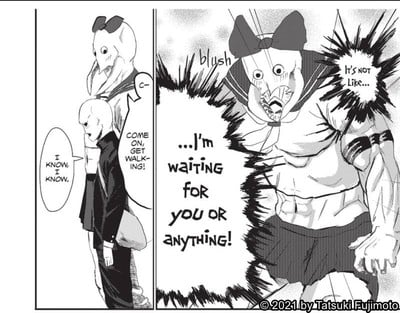
It’s nonstop twists and grabbing imagery throughout, which, when you only have 40 pages to make an impact on a reader, is one way to make a one-shot stand out!
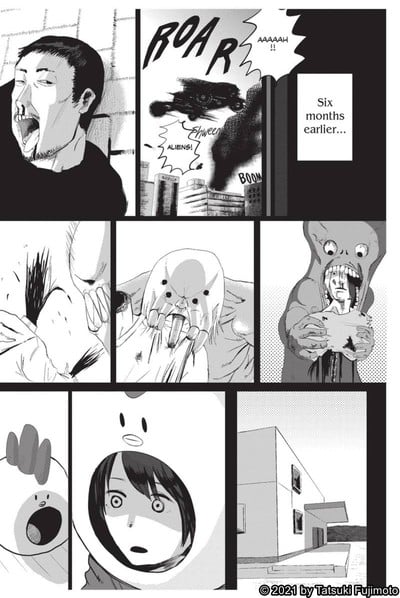
Even rough art can work when the structural fundamentals are strong.
Though his next one-shot, Sasaki Stopped a Bullet, would be the start of Fujimoto’s fast and loose approach to sex and romance in his writing…and a little bit of a step back in terms of art and framing in my opinion.
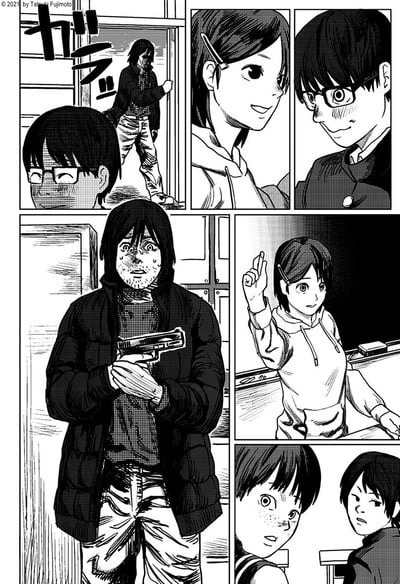
So many of his pet themes show up in these that it’s funny. Most of these shorts are very funny, albeit in Fujimoto’s usual askew manner, reveling in his characters’ immaturity and insecurities.
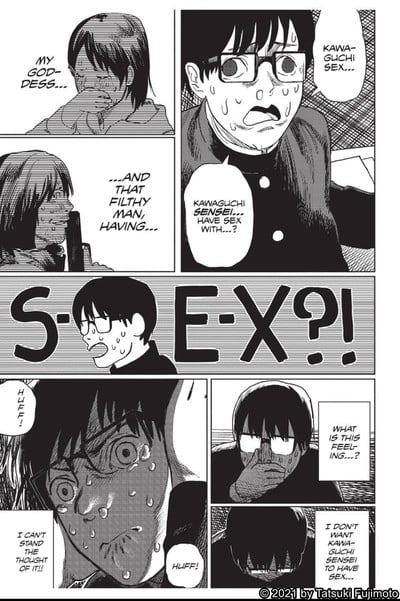
However, I gotta say Love is Blind is probably my favorite entry in the first Before CSM volume. It feels like the origin of the over-the-top comedy that makes CSM so endearing to me.
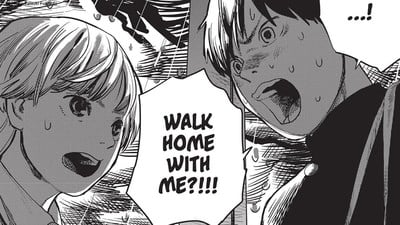
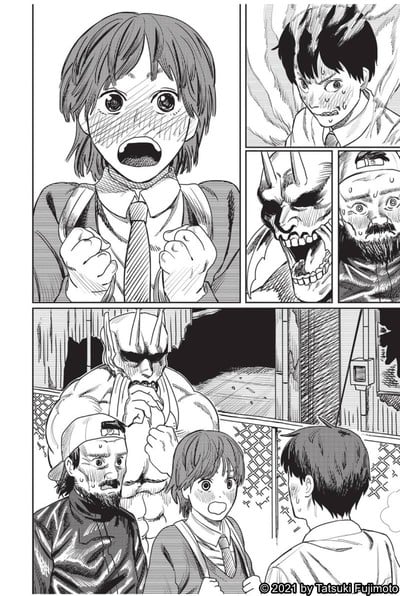
Incidentally, his afterwords for all these works are also great succinct, dry humor exercises. I don’t think the copies on the Shonen Jump app have all of them, but Love is Blind came about because a Jump SQ. editor told him he took “31 pages to do what could be accomplished in 16″…so he went ahead and proved him right.
I don’t think anyone gets maimed, murdered, or nearly assaulted, so Love is Blind is far and away the most wholesome Fujimoto story! And I think his willingness to play around with genre and audience expectations is a big part of what makes his work such a critical and commercial hit.
Those author note inserts are a DELIGHT! The last afterword notes that the final one-shot in the first Before CSM book, Shikaku was written while Fujimoto had a 102-degree fever…which tracks as the story focuses on a sociopathic assassin falling in love with a suicidal vampire.
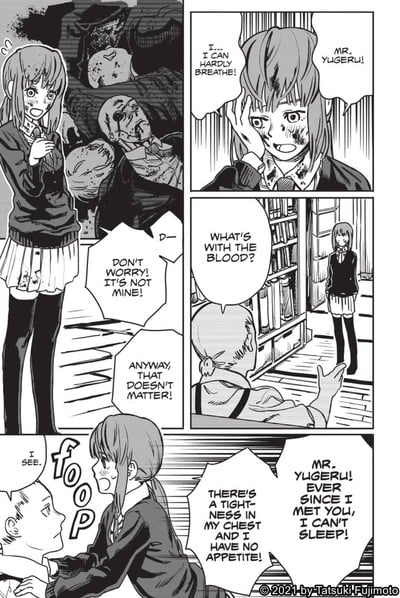
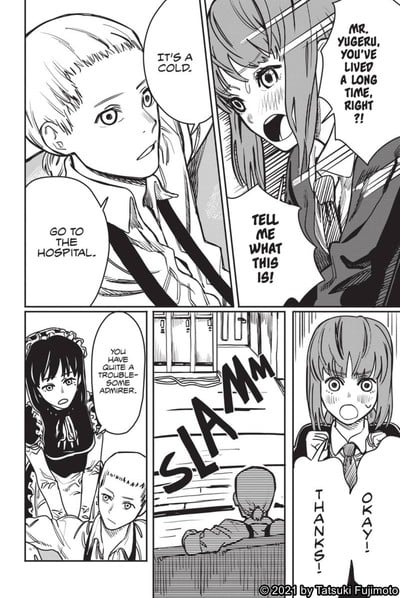
Aw yeah, if there’s one thing Fujimoto likes, it’s sickos falling in love and sibling stories. And those aren’t always mutually exclusive! But it’ll be a bit before we get to Fire Punch…
Shikaku feels the most like a precursor to CSM in terms of the tone and imagery of any of his works so far.
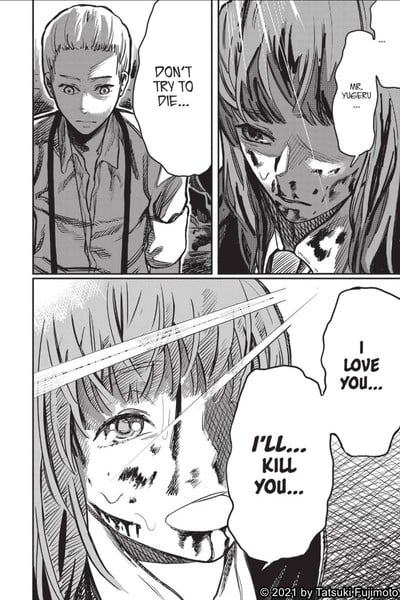
Volume two of Before Chainsaw Man also begins by vamping on that theme with Mermaid Rhapsody. It’s a sweet amphibious love story complicated a tad by pseudo-cannibalism.
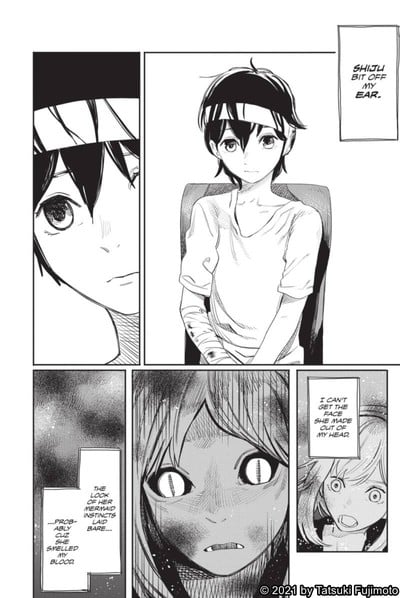
Haha, even if Mermaid Rhapsody is the most forgettable of this volume to me, it drives home how Fujimoto keeps returning to romances that center on accepting a partner’s flaws and capacity for harm.
The violence that Shiju does to the protagonist, Toshihide, doesn’t feel like it represents straight-up abuse, though. Instead, it feels more like a metaphor for the baggage or ugliness that everyone has inside of them to some extent. It’s beautiful and almost feels like exploring a taboo part of personhood and relationships that we aren’t supposed to discuss.
That’s precisely what I love the most about Fujimoto. His preoccupation with misfits and societal outcasts is never about romanticizing them. Whether it’s intrinsic or inflicted upon the person, to be abnormal is to be in pain. I think he gets that hurt people are naturally drawn to each other, but he also gets that they have a larger capacity to both hurt and be hurt. Much of Fujimoto’s transgressiveness, I believe, can be ascribed to him wrestling honestly with that complexity—while never shying away from a weird punchline when the opportunity presents itself.
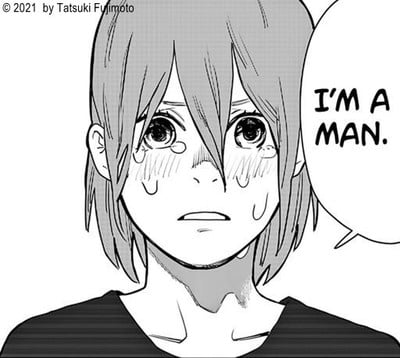
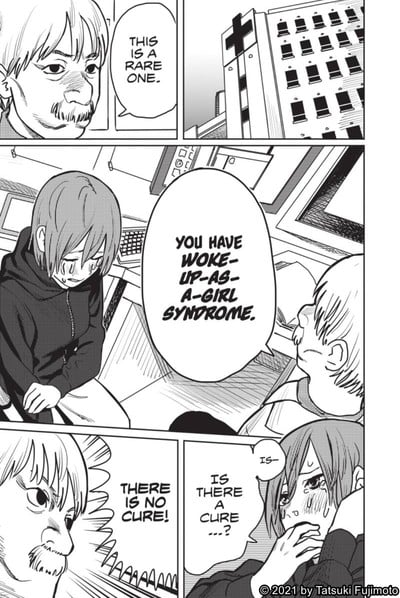
Many such cases.
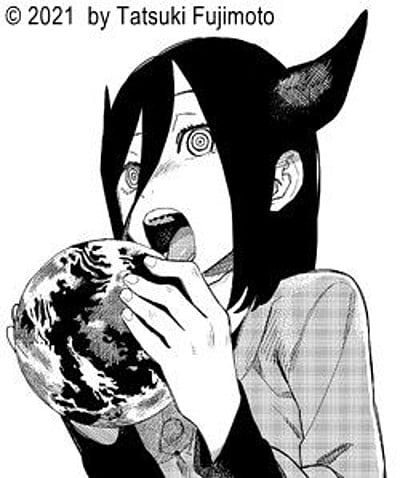
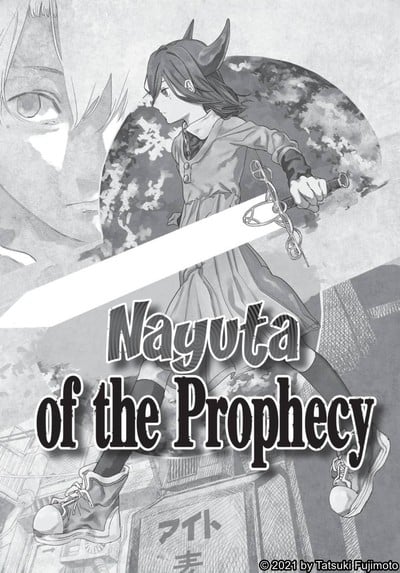
It’s funny that Fujimoto more or less beta-tested the Chainsaw Man part 2 starlet here, with plenty of connective thematic tissue between both works as well. But it’s not difficult to see why he loves her character enough to revive her in his most commercially successful enterprise.
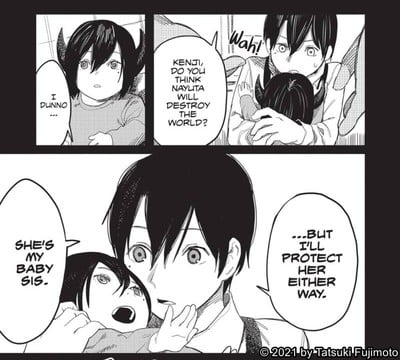
The worldbuilding in Nayuta of the Prophecy also feels very much in line with Fire Punch and Chainsaw Man. There are a bunch of little fantastical elements sprinkled into a world that otherwise matches reality, like weird cats and multi-eyed pigs. Every weird element is introduced so casually that the reader is totally on board with the advanced weirdness at the story’s climax.
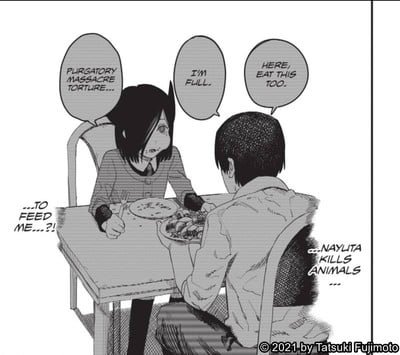
I’m a little torn on how I feel about hitting a younger sibling being the solution to Nayuta’s conflict. However, those siblings are still less problematic than the Sisters in Sisters, which opens with an older sister discovering that her younger sister made a nude painting of her without her consent.
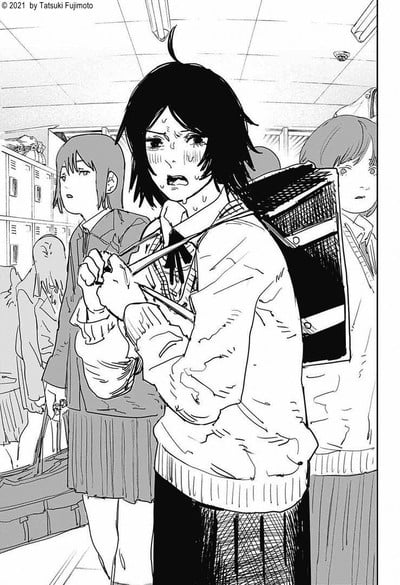
I had a similar expression until it became clear that the story was a metaphor for overcoming jealousy and loving people unconditionally.
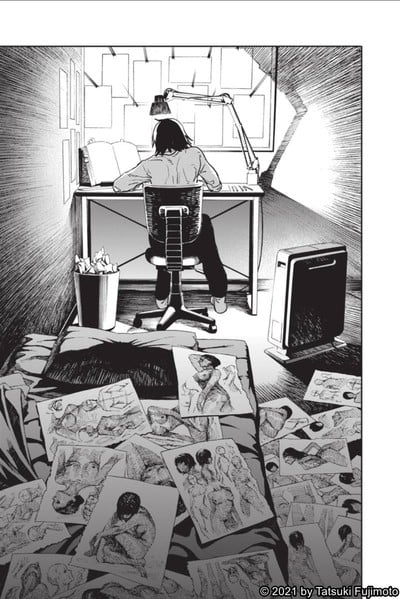

Sisters walked so Look Back could run!
Fujimoto has also firmly settled into that sketchy, lived-in, artistic style that we all know and love by this point.
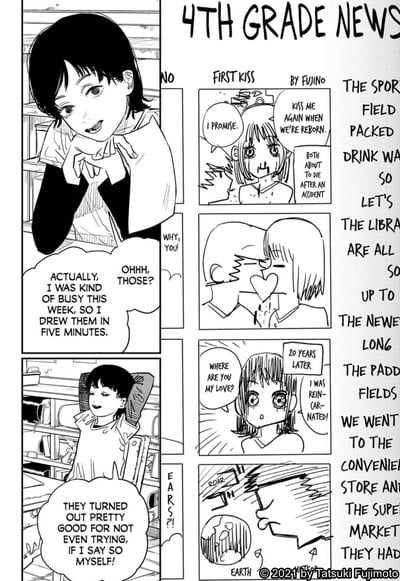
I love how it reads like a quintessentially Fujimoto-esque comic strip, too. It warped punchlines and all. I would not be surprised if this were adapted from an actual comic he drew at that age.
Haha, the heart censoring the kiss in the 4-koma gets me every time. It is very in line with what a kid would draw…and also probably covers up that she had no idea how to draw people kissing.
Dear readers, if you thought Chainsaw Man was rough and unhinged, then check out Fire Punch. Then, you will appreciate how much Fujimoto has reined himself in for CSM.
Who needs a plot when you have big feelings about society and the human condition and a novel set up to explore them!? Not Fujimoto while writing Fire Punch that’s who!
Look Back is practically the polar opposite of Fire Punch, too. While it has the requisite “pinch of fantasy” that Fujimoto needs to add to all of his stories, it’s the most grounded in reality of his major works.
I couldn’t agree more, and in many ways, it feels like the perfect chaser to the first part of Chainsaw Man. While Fujimoto’s love of film is well documented and referenced frequently in his longer-form work, all of his work thus far has shown his deep appreciation for manga. Even his earliest one-shots show that he’s spent a lot of time thinking about how to convey a story through this medium best.
It makes sense that Look Back would explore the process of two people becoming better at creating manga and art more broadly.

And, even as it takes on all of these weighty and human themes, it still manages to be hilarious! Like…

I kind of want to read Shark Kick!

Sometimes, the Gun Devil is just a dude made out of guns!
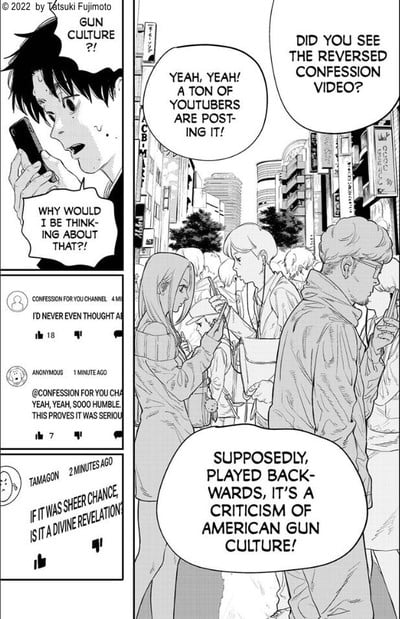
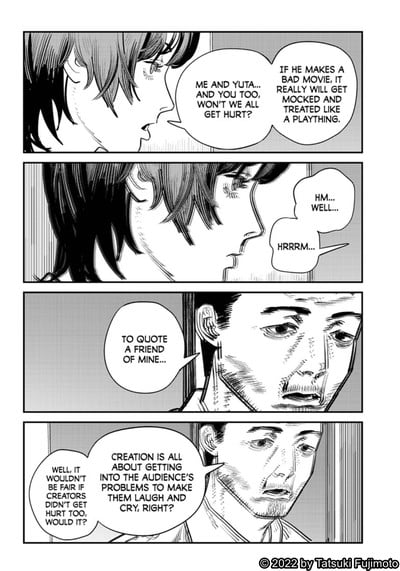
And if you can never perfectly capture the intricacies of life or divorce your own biases from those depictions, you might as well make it fun or add a touch of the supernatural! This is probably the strongest throughline in Fujimoto’s work we’ve covered today.
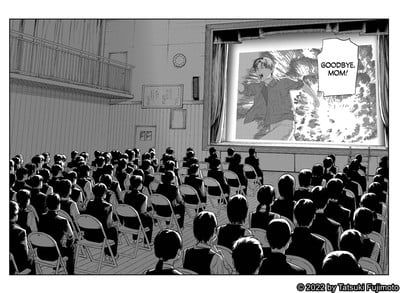
Source link
#Tatsuki #Fujimoto #Prophecy #Week #Anime

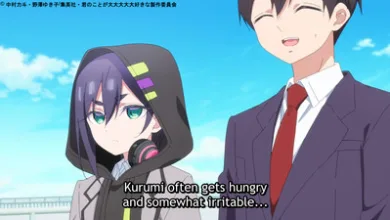
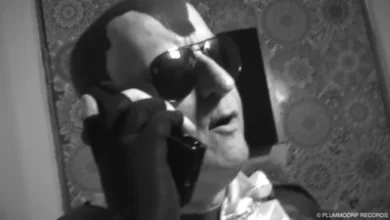
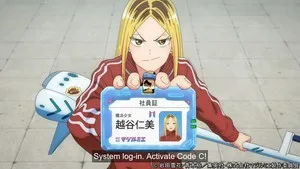
![For the Fans[ervice] - This Week in Anime](https://theanimenews.net/wp-content/uploads/2024/11/1732205217_For-the-Fanservice-This-Week-in-Anime-390x220.webp)